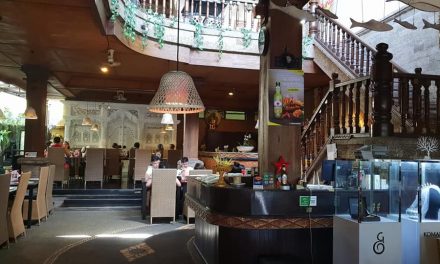When you think of Bali, images of stunning beaches, lush rice terraces, and captivating sunsets usually come to mind. But for me, one of the most vivid and unforgettable experiences I had while exploring this beautiful island was attending a Kuta traditional dance performance. The vibrant colors, graceful movements, and enchanting music all combined to create a sensory experience unlike any other. Let’s dive deeper into the world of Kuta traditional dance music and instruments, and I’ll share some personal anecdotes that highlight its richness and significance.
The Magic of Kuta Traditional Dance
Kuta is known largely for its surf culture and beach parties, but the traditional arts here tell a different story. When I first heard of Kuta traditional dance, I imagined a simple cultural performance. However, upon attending a show under the stars, I realized it was a powerful expression of Balinese culture.As I settled into my seat, the air was filled with the sweet and rhythmic sounds of traditional instruments. The dancers emerged wearing intricate costumes that flashed with brilliant colors, their faces painted with expressive expressions. I was transported to a different world, one full of myth and spirituality.
Instruments That Bring the Dance to Life
One of the things that struck me the most about Kuta traditional dance was the music that accompanied it. The instruments used are deeply rooted in Balinese culture, and each has its unique role in creating the tapestry of sound.
1. Gamelan: The Heartbeat of the Dance
The gamelan ensemble is the heartbeat of Kuta traditional dance. This collection of percussive instruments, including metallophones, drums, and gongs, produces a mystical sound that invites you to lose yourself in movement. I remember vividly the moment the gamelan struck its first note—it sang to me, telling stories of old while compelling me to tap my feet.
If you’re ever in Kuta, try to catch a gamelan performance. The synchronization is mesmerizing, and it truly demonstrates how Balinese musicians have mastered the art of rhythm. Plus, many places offer workshops where you can try your hand at playing the instruments yourself. Exciting, right?
2. Rebab: The Soulful String Instrument
Another enchanting instrument is the rebab—a two-stringed fiddle that adds a haunting quality to the music. Every time the rebab was played, it felt as if the strings were pulling at my heartstrings, urging me to experience a wider range of emotions. It’s incredible how just one instrument can stir such powerful feelings.
Engaging the Audience: The Role of Dance in Storytelling
Traditional Balinese dance is not just about movement; it’s a form of storytelling that conveys historical events, religious beliefs, and cultural practices. During my experience, I noticed how the fluidity and sharpness of the dancers’ movements mirrored the music’s rhythm, creating a compelling narrative.
For instance, there was a segment showcasing a tale of a legendary hero and his battle against evil forces. The dancers’ expressions and movements were so expressive; I felt every triumph and defeat as if I were part of the story. It’s truly a captivating way to connect with the culture.
A Personal Anecdote: Finding My Rhythm
I was fortunate enough to join a traditional dance workshop during my stay in Kuta. As I donned the traditional attire and stepped onto the wooden stage, I felt a mix of excitement and apprehension. Under the guidance of a skilled instructor, I attempted to mimic the elegant gestures and swift footwork of the dancers I had seen just days before.
It was humbling yet exhilarating. With the gamelan playing in the background, I quickly learned that the dance was not just about technique; it was about feeling the music and letting it guide your movements. By the end of the session, I was dripping with sweat but felt an immense sense of accomplishment. I also made some unforgettable friends that shared the same passion for dance and culture.
Practical Advice for Engaging with Kuta’s Traditional Arts
If you’re intrigued by Kuta’s traditional dance and music, here are some tips that will enhance your experience:
1. Attend Performances: Look for local cultural shows in Kuta. The Ayung River and various temples host regular performances showcasing Kuta traditional dance.
2. Get Involved: Sign up for a dance or gamelan class. It’s a fun way to immerse yourself in the culture and meet like-minded individuals.
3. Learn the Stories: Understand the stories behind the dances. Many performances come with a narrative element, and grasping the context can enrich your viewing experience.
4. Visit Local Markets: Explore markets where musicians sell traditional instruments. Speaking to them can provide insights into the craftsmanship and significance of each instrument.
5. Take Photos with Respect: While it’s tempting to capture every moment, remember to be respectful. Some performances may have restrictions on photography, so always check first.
In Conclusion
Kuta traditional dance music and instruments offer an unparalleled glimpse into Balinese culture. The dynamic interplay of sound and movement not only entertains but educates the audience about the island’s rich heritage. My experiences with the gamelan, the rebab, and those breathtaking dancers will forever hold a special place in my heart. I encourage you to seek out these traditions on your visit to Kuta, allowing yourself to be swept away in the beauty of the performance. As they say in Bali, “Om Santi Santi Santi Om”—may peace and harmony be with us all, especially through the art of dance and music.






